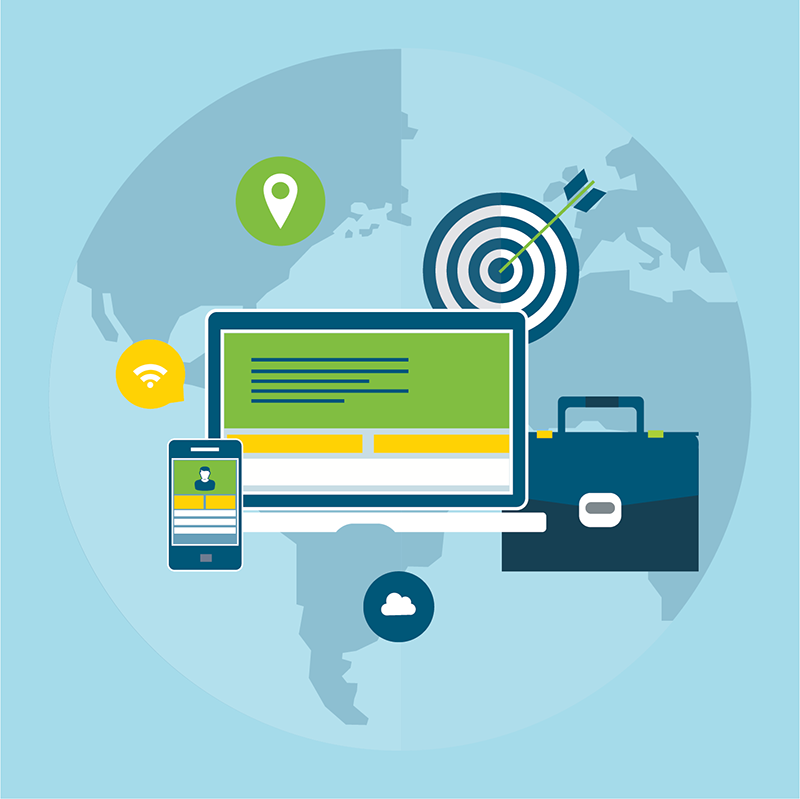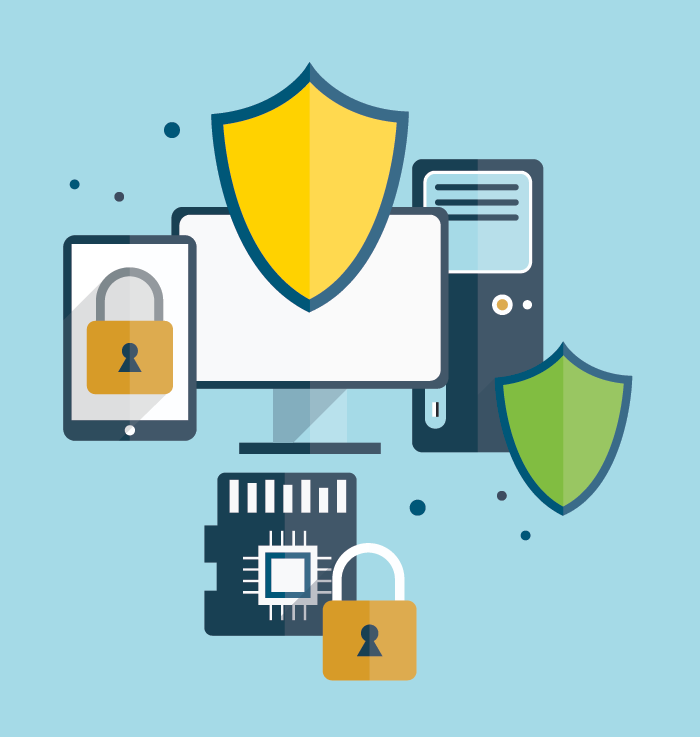 There’s no doubt that the coronavirus pandemic will have a lasting effect on the technology we use to do business. Shifting to remote work. Rise of the mobile workforce. Cloud computing. Virtual collaboration. This new reality is what the workplace looks like for 2020 and beyond.
There’s no doubt that the coronavirus pandemic will have a lasting effect on the technology we use to do business. Shifting to remote work. Rise of the mobile workforce. Cloud computing. Virtual collaboration. This new reality is what the workplace looks like for 2020 and beyond.
With this shift to remote work, we’re all learning new tools and uncovering new challenges. For many businesses, transitioning to a remote workplace was a sudden emergency. For others, remote work was business as usual.
The important fact to consider is that more people are working from home. That means more internet-connected personal devices and more ways for computer viruses to penetrate your business network, files, and data.
The COVID-19 outbreak has affected all businesses in some form or another. Does your company have a technology strategy for the future? Do you know where to begin planning? High Touch can help you understand the current technology landscape, active cyberthreats, and what your business can do to prepare for the future.
Coronavirus Impact on Business Technology
Before the pandemic, some businesses worked entirely remotely. Others had some remote workers, some on-premise workers. Many businesses had completely on-premise, in-office workplaces.
The COVID-19 outbreak forced many businesses to adopt a fully remote workplace overnight. With more people working from home, cloud-based technologies, mobility, and virtual collaboration tools became essential.
Additionally, so did cybersecurity.
Bring Your Own Device (BYOD)
 When quickly transitioning to a remote workplace, many businesses allowed employees to use their personal devices to work from home. This model is referred to as BYOD. With the transition to a remote workplace, there is an increase in people accessing business documents on personal devices, full-time and part-time.
When quickly transitioning to a remote workplace, many businesses allowed employees to use their personal devices to work from home. This model is referred to as BYOD. With the transition to a remote workplace, there is an increase in people accessing business documents on personal devices, full-time and part-time.
Similarly, mobile phones are capable of handling an increasing number of business tasks. For the average employee, mobile devices are capable of handling many of the same functions as a computer. Many businesses provide computers, but not mobile devices. It’s important to include personal mobile devices in your business’s BYOD plan.
The fact is, more personal devices will be accessing your business network, data, and files for the long haul. Your business should have a BYOD device plan in place to help secure your business.
Mobility
Working from home means working from anywhere. Kitchens, living rooms, coffee shops, parking lots…Wi-Fi is readily available pretty much everywhere.
Mobility poses new challenges for network security. Your mobile workforce doesn’t have the constant protection of your in-office firewall and anti-virus. Before, protecting the network and devices inside the building was important. Now, you need to protect the same devices, no matter where they are, no matter what type of connection they’re on.
Every device has become a potential open door to your business.
Cloud-based services
Working remotely with increased mobility has increased the need for cloud-based computing, application, and support.
From virtual workstations to data storage, phone systems, and applications, the 2020 technology landscape is more dependent on cloud-based solutions than ever before. Thankfully, these technologies have allowed businesses to continue operating in the new environment. Many companies have transitioned to cloud-based alternatives of on-premise solutions to enable their remote workers. While the transition to a remote workplace may be temporary, cloud-based solutions will continue to be the choice for many businesses going forward.
Cybersecurity In 2020
The way we do business has changed. The way we work has changed. The way we need to protect our work and business has also changed. With a remote-enabled workforce, there are more users, devices, and ways for hackers to penetrate businesses.
Ransomware
Ransomware is a type of harmful software where the attacker forces you to pay a ransom fee to regain access to your system or files. The scary part about ransomware is that it can lie on a device, undetected, for an extended time. Attackers generally wait to execute cyberattacks until they’re sure you have something of value that you’re willing to pay money for to regain access.
The coronavirus pandemic triggered a surge of remote workers. Hackers are betting on remote workers to eventually return to the office and reconnect to the on-premise network. Once connected, the ransomware virus can spread from the initial device until it takes over an entire network. The impact of a ransomware attack on a whole business versus one device is significant.
As we continue to work remotely, and eventually move back to the office, we should expect ransomware threats to be more persistent.
Zero-day cyberattacks
Zero-day cyberattacks occur when hackers discover security vulnerabilities in software before its engineers can develop and deploy a solution. Between when the hacker finds the vulnerability and when the software manufacturer develops a security patch, the hacker tries to install malware through the security vulnerability.
Remote work means fewer devices being monitored and secured by the on-premise network. Many organizations can roll out security updates and patches through the internal network. Or, at least remind employees to complete software and system updates regularly.
Updates can be more challenging to rollout and enforce with a remote workforce. If people aren’t updating their devices while working remotely, zero-day attacks can become disastrous after employees reintegrate their devices into an on-premise network.
Create a Cybersecurity Plan for the Long Haul
Having a cybersecurity plan and solution with a remote workforce in mind is essential for 2020 and beyond. Here are a few key pieces of information to keep in mind.
Protect all your endpoints
 One endpoint (laptop, desktop, mobile device) can reconnect to your on-premise network and infect everything. Out in the field, working remotely, your endpoints don’t have the same level of protection as your on-premise devices secured behind your firewall.
One endpoint (laptop, desktop, mobile device) can reconnect to your on-premise network and infect everything. Out in the field, working remotely, your endpoints don’t have the same level of protection as your on-premise devices secured behind your firewall.
New cybersecurity protections, such as endpoint detection and response (EDR), ensure your endpoints stay secure, even in a fully remote work environment. Instead of depending on the pre-existing definitions used in traditional anti-virus software, these tools use artificial intelligence and machine learning to monitor for suspicious behavior, identify threats and quarantine infected machines.
Have a reintegration plan
If your business started operating remotely at the start of the coronavirus pandemic, you’re probably planning on moving back into the office at some point in the future, whether that’s a month, six months, or a year from now.
To protect your data, files, and network, you need a plan before you allow employees to plug devices back into your business. Think of this practice like washing your hands when you come home from the grocery store. You don’t want one device to infect the entire company.
Be sure to scan devices and apply updates when transitioning employees back to on-premise work. If possible, set up a sandbox environment to monitor for any suspicious behavior before allowing a device back onto the network.
Educate your users
In a remote workplace, users have more responsibility when it comes to workstation and endpoint management. IT teams are only a call away. However, depending on the size of your company and available resources, supporting a distributed workforce with its added variables can be a challenge.
By educating users on cybersecurity best practices for working in a remote workplace, you can avoid downtime, and hopefully, prevent cyberattacks.
Remind users to continue to monitor for and install updates. While the updates themselves may seem inconvenient to download and install, cyberattacks will be much more troublesome. Likewise, anti-virus scans are essential for device security, though, they take time to complete. Finally, remind users of best practices for browsing the web and opening email attachments. Seemingly simple cybersecurity tips can go a long way.
Implement security awareness training
KnowBe4 is an educational cybersecurity tool that allows you to test your business’s cybersecurity knowledge. Using this training tool, you can create real-time hacking scenarios to test people’s responses to cybersecurity threats, like opening suspicious emails or clicking on suspicious links. If a user fails the test, they’re prompted to watch a video related to the type of cyberattack and best practices for working safely.
Questions? Contact High Touch
We understand that navigating the new technology landscape, cybersecurity, and remote workplace solutions can be a challenge. Our job is to bring the human touch to technology and help make things easier for you.
Contact us to learn more about the comprehensive technology solutions available from High Touch.
